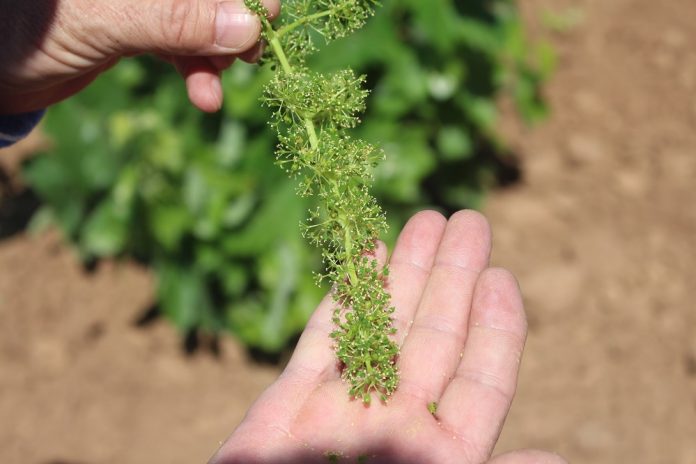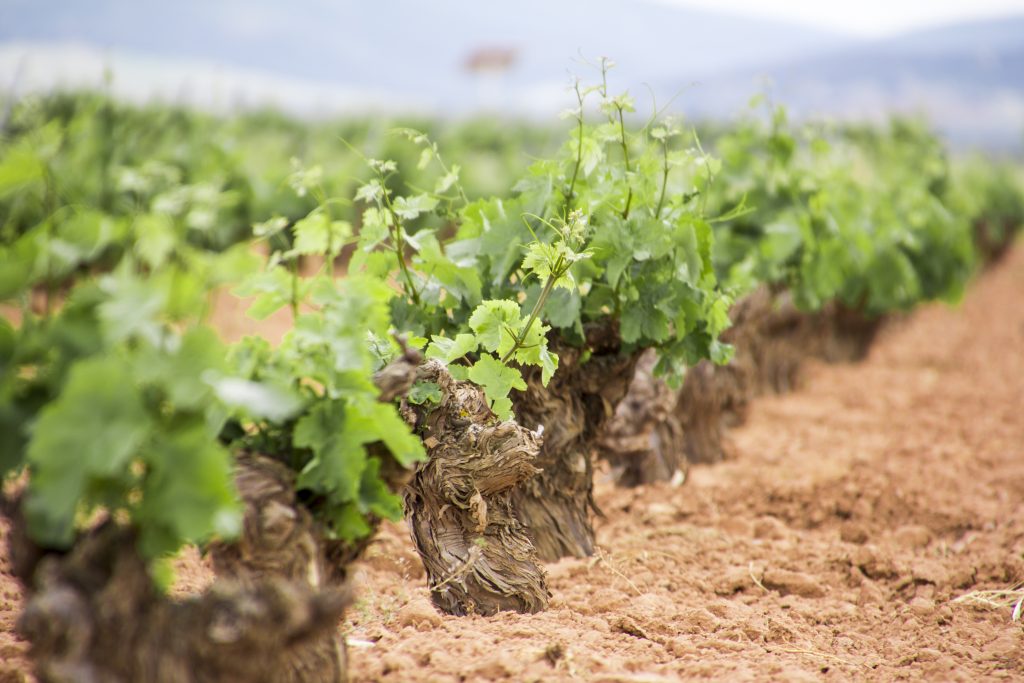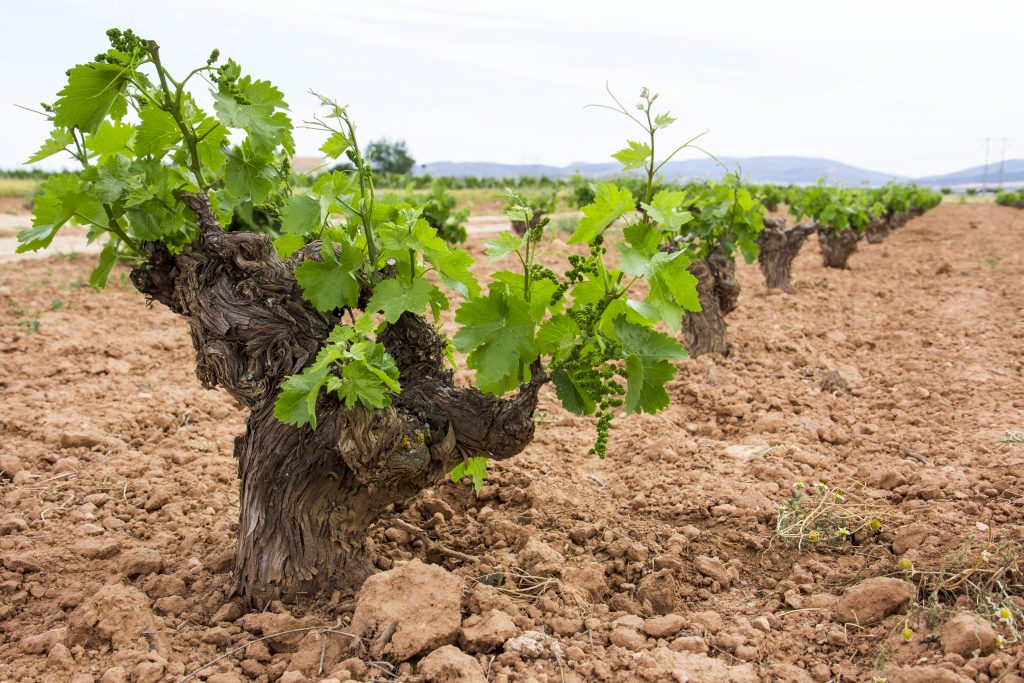As plants, vines follow annual growth cycles set by the seasons. The arrival of autumn and winter, when temperatures drop, means the plant ceases its activity and enters a dormant phase until spring, when it becomes active once again. Firstly, in March, after the buds have broken, shoots start to grow (this takes place at any time in March or even in late February if the winter has been mild), making the vines look very attractive.
Over the following months, April and May, leaves start to appear on the vines, covering the vineyard with lush green foliage. Spring daylight is ideal for the vine sap to start flowing and for photosynthesis to begin. This is when the first pruning is done, to remove excess foliage and allow the vine to breathe.
Vines in La Mancha in late May
The next stage is flowering, which starts in the very early days of summer (before temperatures start to rise to summer maximums), usually in June. These tiny white hermaphrodite flowers are the future bunches of grapes. Wind and insects play their part in aiding pollination and a little rainfall (but not too much) is welcomed by the growers. The next stage of fruit set depends largely on spring rainfall and temperatures, indicating potential crop yield.
Flowering is also an indicator of the size of the coming harvest and can also help to predict whether the harvest will be early or late. Early estimates are made before the start of the harsh La Mancha summer (a typical inland Mediterranean climate).
Hot temperatures (but not the blazing heat of summer) along with rainfall make this period a crucial one for vine growers, as both factors can produce the ideal conditions for mould and disease. However, the prolonged hours of sunshine that La Mancha vines are exposed to, more than 3,000 hours per year, usually guarantee that the fruit will be in a good state of health.













